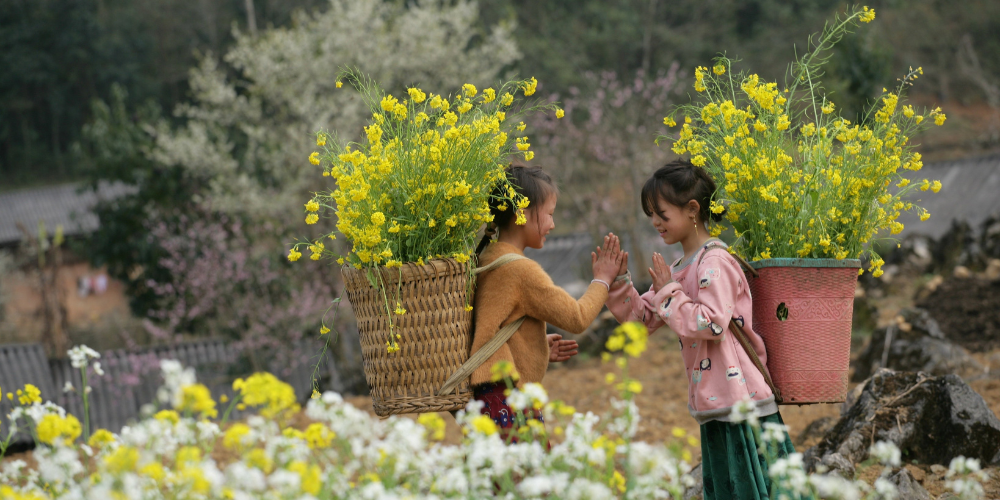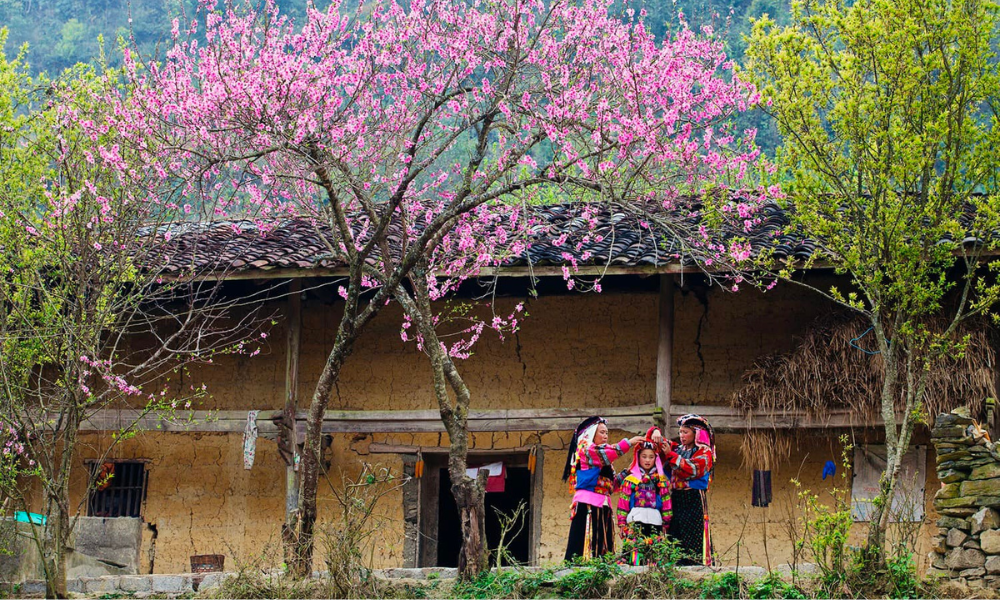
Ha Giang is the northernmost province of the country, bordering Cao Bang province to the east, Yen Bai and Lao Cai provinces to the west, Tuyen Quang province to the south, and China to the north. The winding, steep roads of Ha Giang are inherently challenging for drivers. However, when you look around, the tension gives way to a sense of relaxation as you admire the beauty of the plateau.
Best Time to Visit Ha Giang
Being a mountainous province, the climate in Ha Giang is distinctly colder than the adjacent lowlands and midlands. The average annual temperature is about 21-23 degrees Celsius. The climate is characterized by high humidity throughout the year and heavy and prolonged rain.
You can travel to Ha Giang at any time of the year. People often come to Ha Giang in the autumn when the rice is ripe. The most beautiful time is October, November and December, when buckwheat flowers or mustard fields are in full bloom. In spring, apricot and plum flowers bloom white in the forest, making you feel like you are floating on clouds.
In May, the rice fields glisten with the pouring water season. In June and July, many people miss Ha Giang because of the sudden, heavy summer rains. But thanks to this humidity, the mountains and forests here are covered in a captivating green color.

Move
Getting to Ha Giang from the Northern provinces is easy because there are many direct buses. On the contrary, tourists from far away in the South or Central should start their journey from Hanoi. From Hanoi, there are buses departing from My Dinh, Luong Yen, Yen Nghia, and Gia Lam bus stations almost every hour.
Tourists can choose a sleeper bus or a high-quality limousine, depending on their budget. However, you should travel by night bus to save time and energy for a long journey of discovery. The ticket price from Hanoi to Ha Giang and vice versa ranges from 200,000 - 300,000 VND one way.
When arriving in Ha Giang City, you can rent a motorbike for your own sightseeing at a price of 150,000 - 300,000 VND per motorbike per day. On the contrary, if you do not have enough time and health, or if your group includes elderly people and children, you should rent a 7 - 16 seater service car.
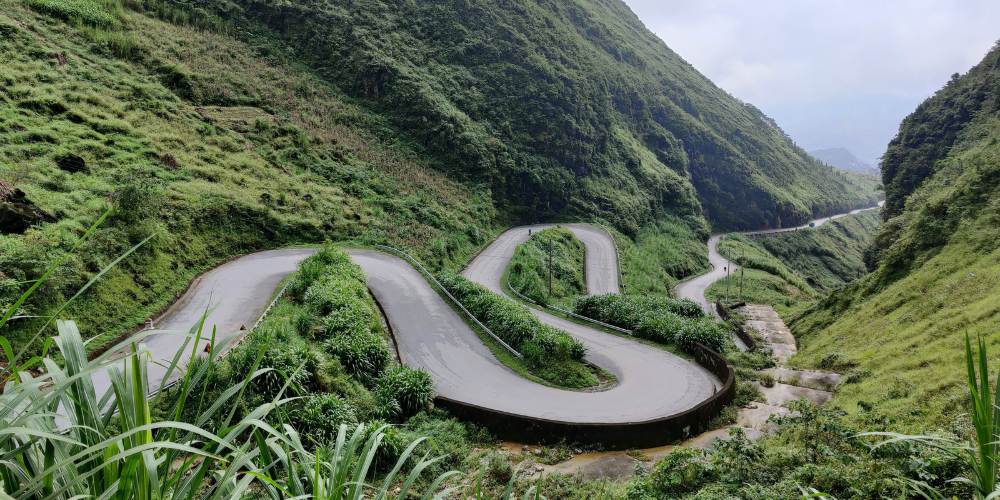
Where to Stay in Ha Giang
Families and couples who want to stay in a high-end, private resort can go to P'apiu in Yen Dinh commune, Bac Me district. Here, visitors can immerse themselves in the colors of the highlands through the longest brocade road in Vietnam, staying in villas designed with the H'Mong people's rammed earth houses. The price for one night is about 10,000,000 VND.
For tourists who love novelty, H'Mong Village with its cymbal-shaped design is a suggestion. The resort is located on the hills of Trang Kim, Quan Ba, facing the Mien River and the majestic mountains in the distance. Tourists can choose to stay in a communal room, priced at 400,000 VND per night or in a cymbal bungalow for 2,400,000 VND per night.
With a choice closer to the community and lower cost, visitors can stay at homestays , including Hoang Su Phi Lodge and Kinh Homestay in Hoang Su Phi, next to terraced fields in Nam Hong village; Ho Thau Eco Village in Ho Thau commune with a resort of rammed earth houses with thatched roofs.
In addition, you can stay at Chung Pua - Auberge de MeoVac (Meo Vac) with a local-style earthen house or Bui homestay, a stilt house in Dong Van. In Dong Van, there is also Hoang Than ancient house for 100,000 VND per person; Ong Vang Meo Vac costs only 230,000 VND per night. In Lo Lo Chai village near Lung Cu flagpole, there is Lo Lo Ancient House homestay.
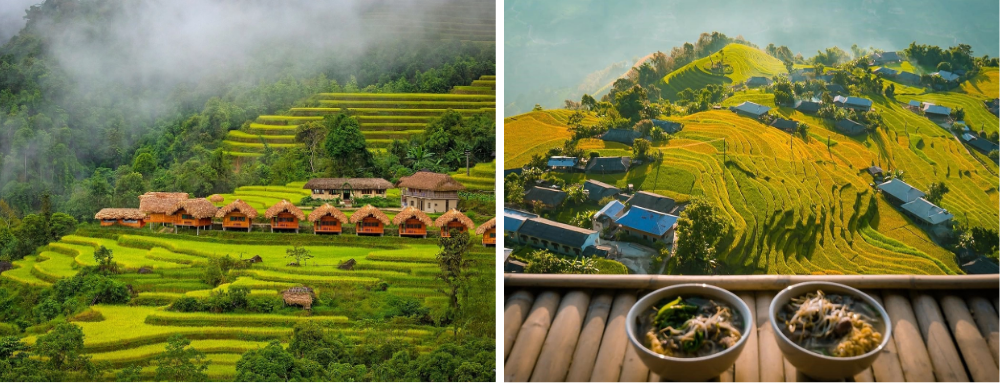
Top Attractions in Ha Giang
Because the tourist attractions in Ha Giang are far apart, you should choose a trip of at least 3 days and 2 nights to have enough time to "ride a horse and see the flowers". A 3-day, 4-night trip is suggested by many tourists, or if you have more time, 5 days .
Below is a sample itinerary for a 3 day 2 night trip.
Day 1: Hanoi - Ha Giang - Dong Van
To be in time for the Dong Van market on Sunday morning, you should depart from Hanoi on Friday evening. At 8am the next day, you can go to Dong Van and take photos along the road, when the morning air is still pleasant. The road from Ha Giang City to Dong Van should be divided into stops to enjoy the journey rather than running straight.
Stage 1: Ha Giang - Quan Ba Heaven Gate (40 km)
From the city, the first point is the Km 0 milestone, then move to Quan Ba about 40 km. There is a gate to heaven here, a famous check-in point, but if you go in winter, there is a possibility of encountering clouds and fog. If the sky is clear, you can take pictures and see the fields below.
From here you can see Nam Dam Lake, which belongs to Nam Dam village, a famous homestay village of the Dao people in Quan Ba. In addition to the Heaven Gate, you can also visit the Fairy Twin Mountains not far away.
Stage 2: Quan Ba Heaven Gate - Yen Minh Town (30 km)
Note, when going to Can Ty bridge there are 2 turns, the uphill way will save you 20 km, but it is also more difficult and requires a good driver. Calculate the time to get to Yen Minh and have lunch there.
Stage 3: Yen Minh town - Dong Van ancient town (45 km)
This is a route with many beautiful landscapes and famous tourist attractions. That is Doc Tham Ma or Deo 9 Khoanh, the symbolic check-in point of Ha Giang. Here, you can easily meet foreign friends, landscape photographers, and especially Mong children carrying baskets full of flowers and grass.

Day 2: Dong Van - Meo Vac
Take some time in the morning to go to the market, a regional feature that cannot be found anywhere else in the lowlands. The market is bustling with many items, from common items of the Kinh people such as electronics, vegetables, clothes... to ethnic specialties such as linen, brocade, buckwheat cake, thang co... If you buy gifts, remember to choose easy-to-carry items such as spices or linen.
In addition to the market, in Dong Van you can also visit the Meo King Palace. The relic site covers an area of nearly 3 hectares and is located in the valley of Sa Phin commune. The Meo King Palace was built in the early 20th century, modeled after Chinese architecture (Qing Dynasty) with curves, curves, and elaborate carvings. The entrance fee is 20,000 VND per person.

If you don't go to the market or the King Meo Palace, you can depart from Dong Van to Lung Cu at 6:30 a.m. to visit the flagpole in the morning. This route is 25 km long, passing through many bad sections with gravel, steep turns, potholes, etc. The travel time is about 1.5 hours. Upon arrival, visitors can climb to the flagpole and admire the mountains and forests at the headland of the country. If you have time, the Cuc Bac coffee shop is also an option to rest.
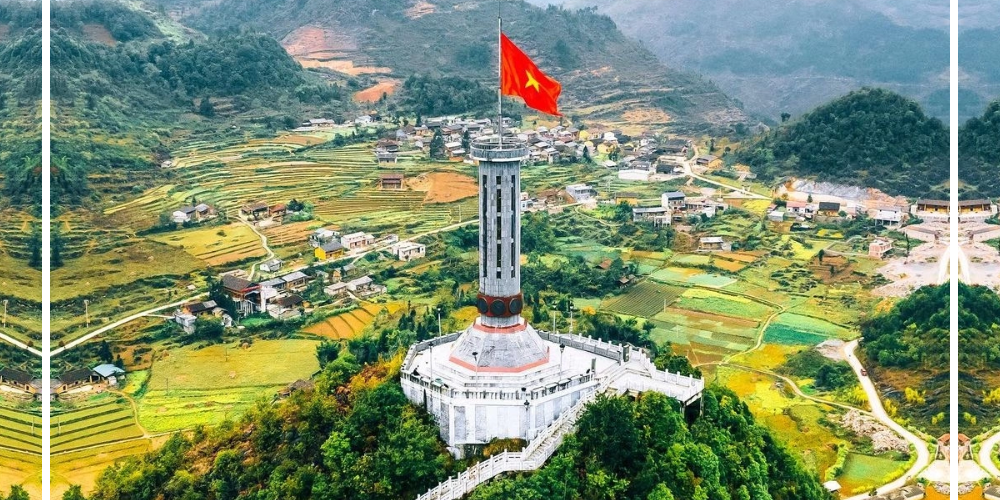
At around 9:30, you go back the old road to Dong Van , then follow the direction of Meo Vac to Nho Que River. The motorbike road down to the boat dock is very steep, some places are under construction so you need a good driver. If you are not confident, you can hire a motorbike taxi service from a local for 150,000 VND round trip.
The road is difficult to travel, with many bumpy sections, but the beauty of the emerald green river will somewhat dispel the fatigue of visitors. Weaving through the winding road hugging the cliff, you will reach the boat dock. The price for a boat trip on Nho Que River is 100,000 VND per person, the journey is about 40 minutes long. The boat usually stops in front of Tu San Alley, where there is the most beautiful scenery for visitors to take pictures.
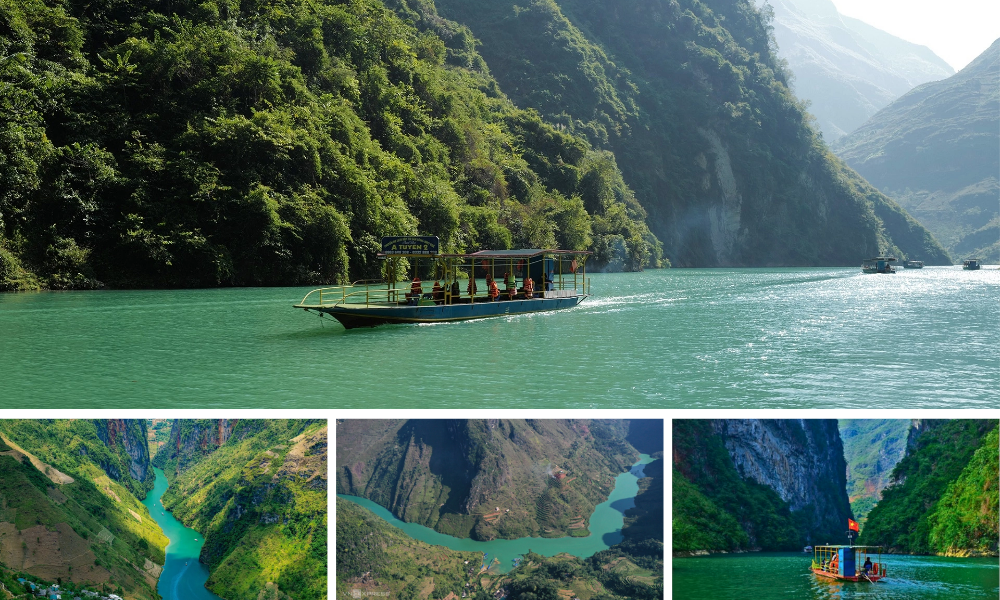
Around 2:30 p.m., you move towards Meo Vac to visit Ma Pi Leng Pass. The pass road is winding but wide and flat, with mountains on one side and abysses on the other.
Surrounding the pass are sky, clouds and mountains, so visitors can leisurely enjoy the scenery and take photos. At the foot of the pass, you can visit the Happiness Road Museum, learn about the difficult construction history of National Highway 4C, from Ha Giang city to Dong Van, Meo Vac.
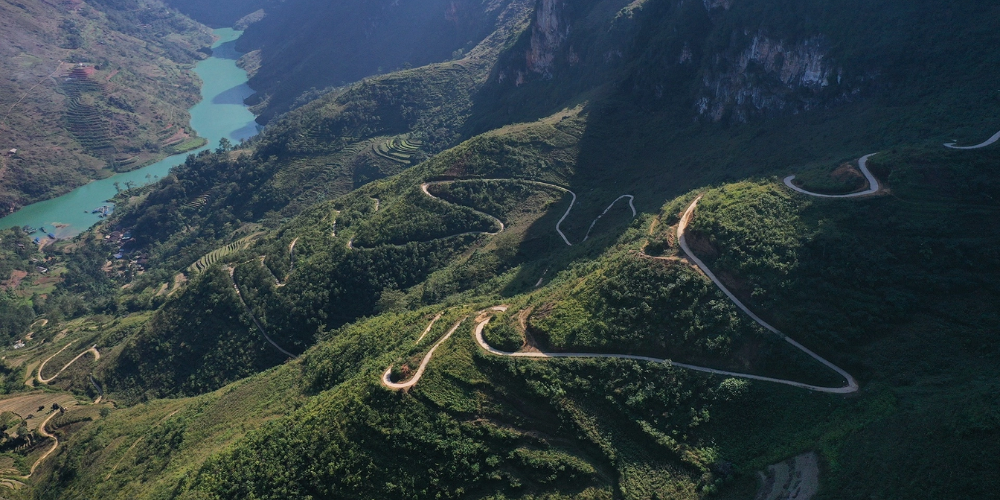
Traveling on the road from Ma Pi Leng Pass to Ta Lang Village, Pai Lung Commune, Meo Vac District is probably an unforgettable experience. 8 km of road with more than 50 hairpin bends and steep slopes.
At around 5pm, you can stop at the 12km milestone to Meo Vac. This is one of the beautiful spots to watch the sunset on Ma Pi Leng Pass, with a view of the Nho Que River in front. After watching the sunset, you travel about 10km to the Mong ethnic cultural village in Pa Vi to stay overnight.
Day 3: Meo Vac - Ha Giang City - Hanoi
In Pa Vi, the scenery is peaceful, when visitors wake up, they will see the surrounding mountains, green and lush. Meo Vac is about 150 km from Ha Giang, you should depart early to catch the bus back to Hanoi. There are two bus schedules for you to choose from: 2:00 p.m. (returning to Hanoi at 9:00 p.m.) and 9:00 p.m. (returning to Hanoi at 4:00 a.m. the next morning).
If you choose the 2:00 p.m. time slot, you should depart from Meo Vac at 8:00 a.m. and go straight in the direction of Mau Due - Yen Minh - Quan Ba - Ha Giang City, without stopping to visit. Note that the road from Meo Vac to Mau Due is quite bad, with many potholes.
If you choose the bus departing at 9pm from Ha Giang city, you will have time to visit some more places. You go on Mau Due - Duong Thuong road, then visit Lung Tam weaving village, go through Quan Ba, visit Lung Khuy cave. Then move to Ha Giang city.
Food & Local Cuisine in Ha Giang
Coming to Ha Giang, don't miss the egg rolls with a thin layer of wet dough, inside is the yolk color of eggs, a specialty of the land at the head of the country.
Another dish to try is au tau porridge, made from yellow sticky rice mixed with regular rice, water chestnuts simmered with fatty pig's feet broth and herbs. Au tau porridge is not only a simple dish, but also a tonic to relieve colds.
Humpback Chung cake is a specialty of Ha Giang, wrapped by hand, the crust is green or black depending on the type of rice. Green cakes have rice mixed with galangal, black cakes have purple rice. The filling has both lean meat and fat. The cake is wrapped by several families in Ha Giang city every day, but must be ordered in advance because of limited quantity. Each cake costs from 17,000 VND.
Thang den in Dong Van looks like banh troi tau in Hanoi, made from sticky rice flour, can be made vegetarian or wrapped in bean paste.
Thang Co is not a dish that everyone can eat, but it is a specialty of the Northwest with the aroma of cardamom, doi seeds, lemongrass and the fatty taste of meat.
Au tau porridge is made from sticky rice, pig's feet and au tau root. Wash the au tau root, soak it in rice water overnight, then simmer it for about 4 hours until it becomes soft and crumbly. Then the meat is mixed with rice and cooked in the water from pig's feet. Au tau root is very poisonous so it must be processed carefully, eaten to relieve hangovers and prevent bone and joint pain.
Buckwheat cake is a typical cake of the Mong people in the rocky plateau. The process of making the cake involves many steps. The harvested buckwheat seeds are dried and then ground until smooth. The flour is then mixed with water and molded into flat round cakes, put into molds and steamed. When eaten, it is grilled or fried. The cake has a fragrant, slightly sweet, and slightly gritty taste.
Bamboo Sticky Rice of Bac Me has gradually become a typical specialty of the Tay ethnic group. When enjoying, the fragrant bamboo sticky rice mixed with banana leaves and grilled bamboo tubes, eaten with sesame salt or grilled stream fish will be very interesting.

What to buy as gifts in Ha Giang?
Ha Giang oranges are famous for their delicious ripe fruits with a distinct, sweet flavor and are a gift that any tourist would want to bring back for relatives and friends.
Smoked sausage is made from half lean, half fat meat marinated with salt, sugar, MSG, white wine, ginger juice and a little bit of dried, crushed macadamia nuts marinated with the smell of kitchen smoke with a characteristic aroma that makes you remember it forever after just one bite.
Every September to December of the lunar calendar is the time to harvest mint honey in the Stone Plateau. Along National Highway 4C to Quan Ba, Dong Van, Meo Vac districts, visitors can easily see beekeeping huts and honey exploitation on the spot. The honey is typically lemon yellow, richly aromatic, and sweet and cool like mint.
